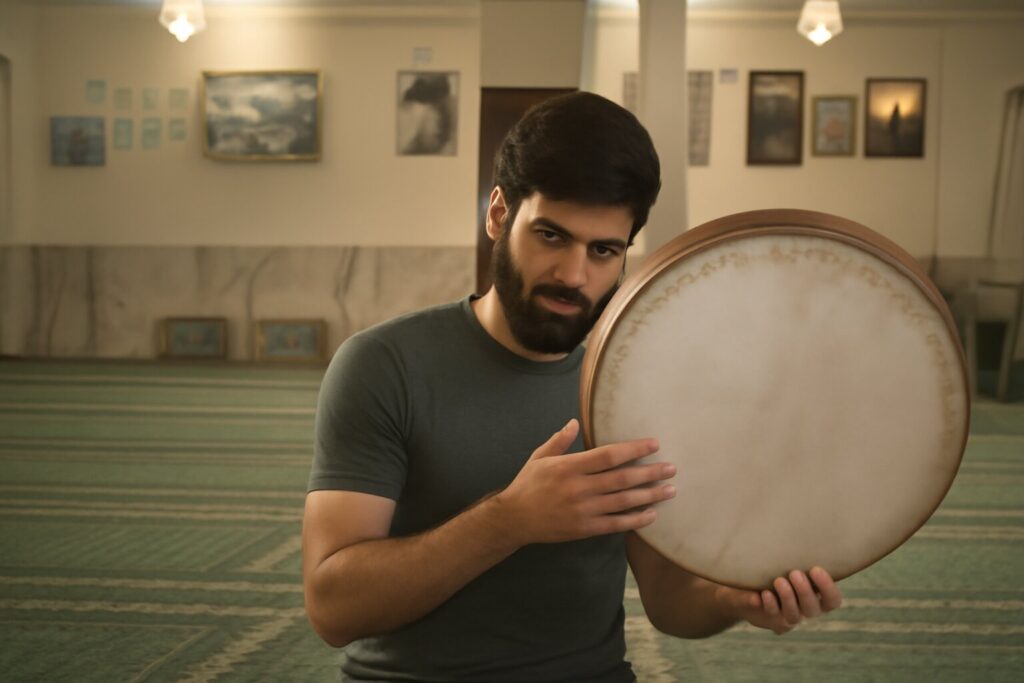Introduction
Sufi paths aim to apply Islamic law in various aspects of spiritual and material life, striving to achieve the highest levels of connection to Allah. The movement during dhikr is an issue that causes debate among some Muslims; some consider it an innovation, while others see it as a means of enhancing spiritual impact. In this article, we will discuss the issue of movement during dhikr, its impact on Sufism, and what Islamic heritage has to say about it.
Dhikr and Movement: The Views of Imams and Scholars
In his interpretation of the verse {Those who remember Allah standing, sitting, and lying on their sides.(Al-Imran}, Imam Al-Alusi in his “Ruh al-Ma’ani” explained that the companions of the Prophet (PBUH) used to remember Allah while standing on their feet on Eid day, affirming that this movement was part of expressing joy in Allah, reflecting its legitimacy in dhikr. Additionally, Imam Al-Katani in his book “Al-Tarateeb Al-Idariyyah” mentioned that swaying during dhikr was known among the companions, where some would move or sway during dhikr like trees swaying in the wind. Therefore, this swaying is not an innovation but is part of the spiritual practice established by the companions.
The Prophetic Tradition and Dancing during Dhikr
It is narrated that the Prophet (PBUH) did not disapprove of the Abyssinians who were dancing in the mosque during dhikr. Anas ibn Malik (RA) reported: “The Abyssinians were dancing in front of the Prophet (PBUH) saying: ‘Muhammad is the righteous servant,’ and the Prophet (PBUH) did not disapprove of them; he allowed them to do so.” This indicates that movement during dhikr does not contradict the Sunnah. The hadith “When you pass by the meadows of Paradise, graze freely” shows that listening and swaying during dhikr is permissible, encouraging the enjoyment and listening to dhikr.
The Companions and Spiritual Movement during Dhikr
Regarding the companions, Imam Ali (RA) described how the companions would remember Allah, saying: “They used to become disheveled and dusty, their faces like the backs of goats. They spent the night in prostration and standing, reciting Allah’s Book, moving between their foreheads and feet. When they woke up and remembered Allah, they swayed like trees swaying in the wind.” This description reflects a state of spiritual swaying that occurred among the companions during dhikr, proving the spiritual legitimacy of movement during dhikr from a spiritual perspective.
Presence in Dhikr among Sufis
Presence in dhikr means that one moves physically to express the spirituality felt, and it is permissible in Sufism if done with pure intention. Imam Junayd (RA) emphasized that “those who are present in dhikr” have no objection as long as they are in a state of worship for Allah. He also pointed out that this presence is inherent in Sufis and expresses the pleasure of spirituality they feel during dhikr.
Criticism and Rectification
Some object to presence and swaying during dhikr, claiming that it is not from the Sunnah. However, what is mentioned in the hadiths and the lives of the companions and scholars shows that this act was common and permissible. These movements are part of expressing love and deep spiritual feelings towards Allah.
Movement in Dhikr: Legitimacy and Spiritual Goal
Swaying and movement in dhikr have spiritual significance in purifying the heart and soul. Imam Ibn Abidin stated that movement in dhikr is not prohibited if done with a pure intention and does not accompany sin. He added that the spiritual behavior in this case refers to the state of “wajd” experienced by the disciple when they are overwhelmed by dhikr and their soul connects with Allah, contributing to their purification and spiritual development.
Presence in Dhikr: Spiritual Benefits
Through dhikr and presence during it, the soul fully manifests, and the disciple feels a deeper connection with Allah. This presence in dhikr helps refine the soul and allows the individual to transition from attachment to worldly matters to a state of spiritual clarity, leading them towards annihilation in Allah.
Conclusion
In conclusion, we deduce that movement during dhikr is not prohibited in Islam if done with a pure intention. Rather, it is an effective means of increasing spiritual influence and strengthening the connection with Allah. These movements have precedents in the behavior of the companions and the approval of actions by the Prophet (PBUH) in this regard. Dhikr, with its forms and movements, is a means of reviving hearts and purifying souls in the Ksenzeni path, and the ultimate goal should be to draw closer to Allah.

